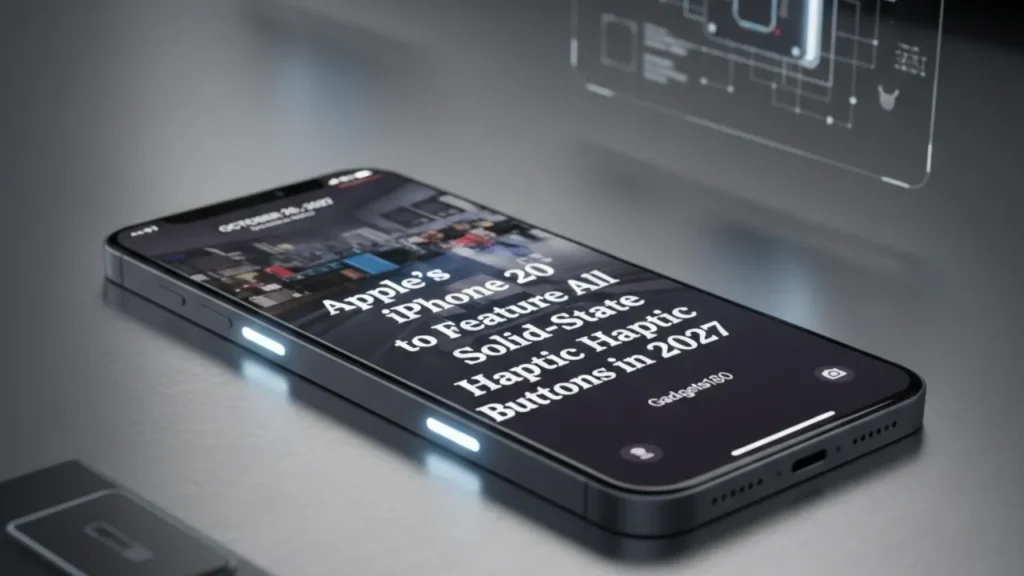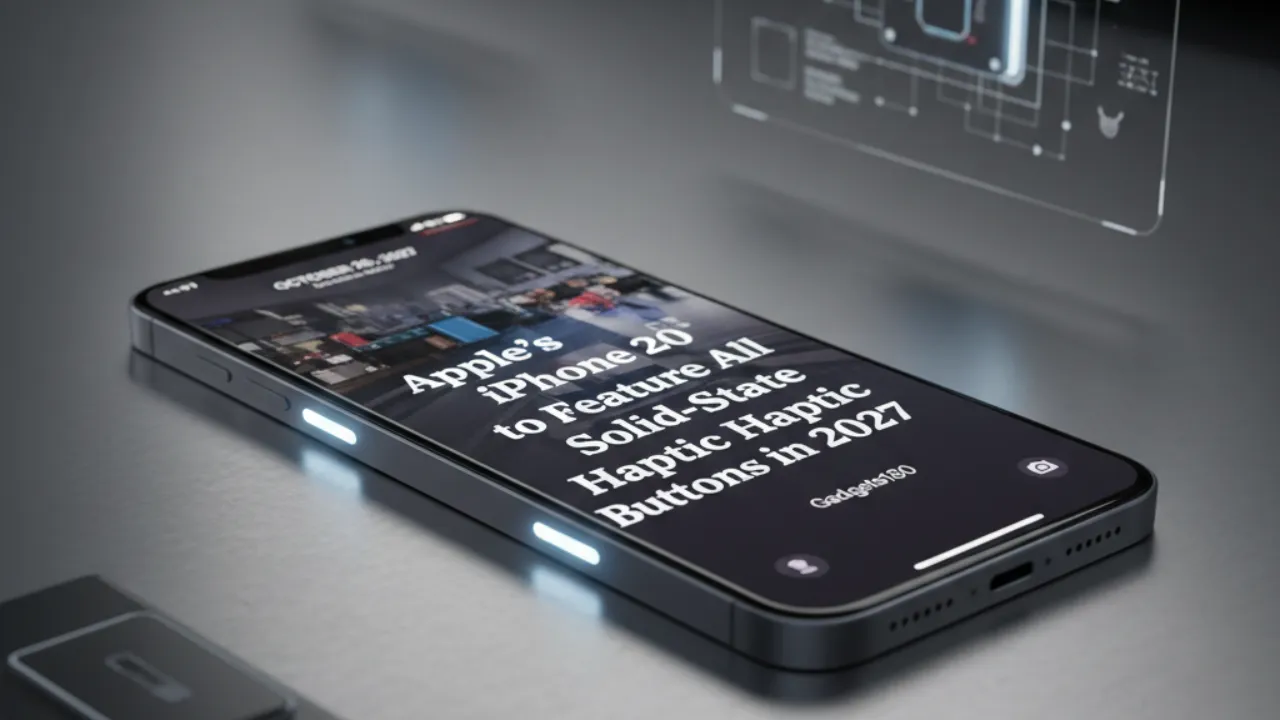Apple is reportedly planning a major hardware redesign for its upcoming devices, beginning with the iPhone 18 series next year. According to a new leak from tipster Setsuna Digital on Weibo, the tech giant aims to replace traditional mechanical buttons with solid-state controls that use advanced haptic feedback by 2027. This change could mark one of the biggest shifts in Apple’s hardware design since the introduction of Face ID.

From Click to Touch: The Evolution of Apple’s Buttons
The tipster claims that Apple has completed functional testing of the solid-state button technology, which now works as intended in prototypes. This development indicates that Apple is preparing the technology for mass production, likely debuting it on the iPhone 20 series in 2027.
Under this new system, all of the iPhone’s physical buttons — including the power, volume, action, and camera controls — will move away from mechanical switches. Instead, they will simulate the feel of a click using localized haptic vibration feedback, creating a realistic touch sensation without any moving parts.
This approach not only enhances the durability and water resistance of the devices but also contributes to a sleeker, more seamless design.
Early Adoption Expected with iPhone 18
Before fully replacing all mechanical buttons, Apple is expected to begin the transition with the iPhone 18 series in 2026. The company will reportedly start with the camera control button, introducing a simplified pressure-sensing design that removes the current capacitive sensing layer used for touch detection.
Future iterations will likely incorporate piezoelectric ceramic components — materials that produce precise vibrations when pressed — allowing for more natural tactile feedback.
Expanding Beyond iPhone
Apple’s shift to solid-state buttons is not limited to iPhones. According to the report, the same technology could be integrated into future iPad and Apple Watch models, leading to a unified design philosophy across Apple’s ecosystem.
Such consistency would not only enhance user experience but also simplify manufacturing and durability improvements across product lines.
Why Solid-State Buttons Matter
The move to solid-state technology aligns with Apple’s long-term design goals:
- Increased Durability: Eliminating moving parts reduces wear and tear.
- Enhanced Water Resistance: Fewer openings mean better protection against liquid damage.
- Improved User Interaction: Advanced haptic feedback can mimic real button presses while enabling new gestures like firm press or swipe.
However, Apple is reportedly still fine-tuning the feel and responsiveness of the technology to ensure it matches — or exceeds — the tactile satisfaction of traditional buttons.
The Road Ahead
While the transition to solid-state buttons is still under development, the gradual rollout beginning with the iPhone 18 suggests Apple’s confidence in its progress. The full implementation is expected with the iPhone 20 series in 2027, marking a pivotal shift toward a buttonless, more resilient design across Apple’s device lineup.
Until then, users can expect the familiar mechanical buttons to remain as Apple continues to refine this next-generation control system.






